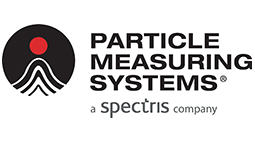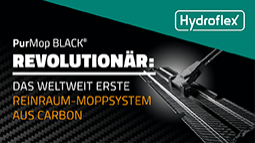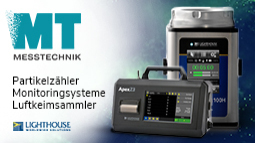When is a cleanroom glove a "cleanroom glove"?
Validation of any glove used in a cleanroom is typically a long and demanding process. In the face of an increasingly stringent environment, the needs for disposable gloves have changed dramatically. Two decades ago it was common practice to accept standard gloves in PE packaging for use in the cleanroom. Likewise vinyl gloves were widespread particularly in the micro-electronics industry, but a better understanding of the contamination and barrier issues posed by these types of glove have largely contributed to their disappearance. Meanwhile, in the pharmaceutical industry, the practice of using standard surgical gloves (i.e. those where the wallets and outer packing are both made of paper) continued even in aseptic environments.
The adoption of ISO 14644-1 at the beginning of the decade introduced a single standard for cleanroom classification and made it much easier to understand airborne particulate cleanliness. A similar convergence was taking place in Europe for the pharmaceutical industry, with the publication of the Guide to Good Manufacturing Practice for Medicinal Products and its Annexes (EC GMP). Specific areas such as the manufacture of sterile medicinal products are covered in the annexes. Whilst none of these developments give a specific focus to disposables for use in the cleanroom, the trend towards the adoption of cleaner practices in an increasingly regulated environment was clear. Possibly as a way of trying to fill potential gaps, the VDI-Society Civil Engineering & Building Services in Germany began publishing a series of guidelines known as the VDI manual of Cleanroom Technology. With reference to consumables to be used in the cleanroom, this is covered in Annex H of VDI 2083 Part 5.1 “Cleanroom technology- Cleanroom operation“.
Throughout the electronic, aerospace and solar industries, evaluation procedures have undergone a significant transformation. The same pace of change does not appear to have been mirrored in the pharmaceutical industry, where in some sectors surgical and medical examination gloves continue to be used in respectively sterile and non-sterile areas. Some hospital pharmacies, where cytotoxic drugs and parenteral products are prepared, may view personal safety as the main priority followed by cleanliness of the product. However under the influence of ISO 14644 and especially the EC GMP, these areas are undergoing change.
Why do cleanroom applications need a specific glove?
In many case the primary purpose for wearing gloves is to avoid contamination of the product.. Apart from the costs associated with high batch failure rates, contamination by biological agents of parenteral drugs can have serious consequences for patients. A similar concern is the need to maintain the cleanliness of the surrounding cleanroom environment, as this can contribute to product contamination.
The first step in the evaluation is the choice of glove material
See table 1: Summary of main features of glove materials
Where electrostatic discharge (ESD) is a concern, the following should be borne in mind:
- Natural Rubber Latex gloves are static insulative – static insulative materials are considered as having a surface resistance of higher than 1 x 10¹² ohms/square. The danger here is that the charge is held to a certain point then released in an uncontrolled fashion. Even with high surface residues such as ionic contaminants, the gloves appear to remain static insulative.
- Nitrile gloves are in terms of surface resistance considered to be on the border between the insulative and static dissipative ranges. Extensive cleaning especially in deionised water may reduce the glove’s dissipative properties. Static dissipative means that the electric charge bleeds out in a controlled manner and does not affect the properties of an item. A glove that is static dissipative has a surface resistance of more than 1 x 10⁵ but less than 1 x 10¹¹ ohms/square.
- Vinyl gloves (often referred to in the past as ESD gloves) offer the best dissipative qualities, by virtue of the high level of surface contaminants.
- Neoprene may exhibit similar ESD behaviour to Nitrile. Furthermore as many Neoprene gloves have an inner coating (often polyurethane or silicone) to facilitate donning, it is unlikely that they will have undergone rinsing in deionised water to enhance cleanliness. Therefore any favourable static dissipative properties are likely to be derived from high levels of surface contaminants.
Why is it important to consider the cleanroom classification?
Based on ISO 14644-1, the lower the ISO Class the lower is the permitted concentration of airborne particles. Whilst the electronic industry will tend to focus on particles and extractables, the pharmaceutical sector will give particular attention to bacterial contamination. For those operating under sterile conditions, the potential for endotoxin contamination will be of special interest. However for both non-sterile and sterile applications, the potential of a glove to cause particle contamination should be a source of interest as these particles could support microbial life. Glove manufacturers can ensure that the lowest contamination levels are maintained, by laundering gloves in deionised water, drying under HEPA filter driers and adopting cleanroom protocol for packing and sorting the gloves. The latter stage is often done in an ISO 5 or even 4 cleanroom.
Other criteria for selection of cleanroom gloves
Whilst operators’ comfort when wearing gloves and their personal safety are clearly significant factors, any validation process will also want to consider the valuable contribution that can come from supporting documentation.
Feeling and comfort
Feeling and comfort are important, as an operator who experiences discomfort and is unable to perform correctly various tasks may cause errors. However: just because a glove is comfortable does not automatically mean that it is the right choice. Natural rubber latex is probably the most comfortable glove material, but brings with it the risk of natural rubber latex allergy and poor abrasion resistance leading to potential shedding of particles in-use. Gloves with an inner-coating may be viewed as desirable by users, as they offer effortless donning. However these gloves are unlikely to have been subjected to the extensive laundering (particularly in deionised water) needed for a cleanroom glove, in order to render them low in particles and extractable contaminants. In contrast nitrile gloves may not provide the same level of comfort and dexterity, but multiple rinses in deionised water can produce a glove with the lowest levels of particle and extractable contamination. Additionally compared to natural rubber latex, nitrile offers superior abrasion resistance coupled with more favourable ESD properties.
Availability of documented performance
A glove manufacturer’s ability to provide comprehensive and insightful documentation will not only facilitate the validation process, but could ultimately lead to the reduction or even elimination of incoming inspection. In this respect, lot-specific data is often preferred to periodic tests, such as those done annually or every quarter. For many years, the electronic industry has been using such data as part of their Standard Operating Procedures (SOPS). Increasingly the pharmaceutical industry has been requesting information of this nature to support at least the evaluation process. Specific data that could be requested is as follows:
- Particle residues by lot for sterile and non-sterile gloves. Tested in accordance with IEST – RP – CC005.4
- Endotoxin testing by lot for sterile gloves to confirm low endotoxin content claim. Testing to be based on the Limulus Amoebocyte Lysate kinetic tubidimetric technique (LAL)
- Sterilisation by lot confirming that gloves have been sterilised to SAL (Sterility Assurance Level) of 10⁻⁶ in accordance with ANSI/AAMI/ EN ISO 11137:2006
Product data sheets that are frequently found on manufacturers’ websites will often give a snapshot of the quality of the data available. To assess the potential of the manufacturer to deliver documented consistency, requesting copies of certificates of analysis or conformance for three or more recent lots could be helpful. An example of a certificate of conformance is detailed below. Under “Physical Test Data”, the number of total samples of final product is shown for various physical tests. The column referred to as “barrier defects” gives important information in terms of the incidence of pinholes. Lots are accepted on the basis of whether or not the number of defects exceeds the number of statistically permitted defects (as determined by AQL). Thus “Pass” will be shown when the number of permitted defects was not surpassed. It will be noted that particle contamination analysis is defined both by concentration (i.e. average particles/cm²) and distribution (i.e. particle size range expressed in µm). (see Certificate of Conformance)
Those operating in sterile environments will seek reassurances as to sterility of the gloves. A certificate of irradiation is outlined below and shows the minimum and maximum doses of irradiation to which the gloves have been subjected. Often as part of the initial evaluation process, additional information will be sought covering sterilization validation procedures. The latter is most likely to include dose-mapping, GMP audits of the contract sterilization facilities etc. (see Certificate of Irradiation)
Regulations and Norms
If as part of a risk assessment disposable gloves are being used for personal protection, then only those gloves that are registered according to the Personal Protective Equipment (PPE) Directive (89/686/EEC) should be used. Additionally if the gloves are being used for personal protection against chemical splashes, then selection of gloves that are registered as Complex Design (Category III) according to the PPE Directive would be appropriate.
Gloves that are Category III and designed for micro-organism resistance must achieve at least an AQL of 1.5 (Level 2), based on the water penetration test. Gloves of this type may also exceed this minimum performance requirement for micro-organism resistance by having an AQL of less than 0.65 (Level 3). AQL (Acceptable Quality Level) is a crucial parameter for assessing the barrier performance of a glove and specifically with regard to pinholes. Through a process of random sampling, an AQL of less than 0.65 assumes a statistical probability that no more than 0.65% in any given batch can have pinholes. It is therefore significantly more stringent than an AQL of less than 1.5 which would permit up to 1.5% having pinholes. AQL also has important implications for protecting the product as pinholes provide a passageway for human-borne contaminants. Accordingly in those areas where protection from microbial contamination is a key priority (e.g. aseptic areas), seeking gloves with an AQL of <0.65 may be prudent.
For applications where there is exposure to potentially harmful viruses, it should be noted that the above claim of micro-organism resistance does not extend to protection to viruses. This may be a particular concern to vaccine manufacturers that routinely use live viruses. If there is a specific need for viral protection from viruses, then gloves which have additionally been tested for viral penetration may be the solution (e.g. bacteriophage test as defined in ASTM F1671 or ISO16604:2004).
Need for special packaging
Standard gloves packed in cardboard boxes are not compatible with most cleanrom environments. Gloves packed in this way will be prone to shedding cardboard particles, whilst it will be noted that the action of taking the gloves out of the boxes will often exacerbate the risk. For the above reasons removing the gloves from the cardboard box and depositing them in plastic dispensers will not eliminate the risk of particle shedding in-use. Consequently it is standard practice to only accept gloves in PE packaging for use in cleanrooms. Often these are double-bagged to facilitate safe transfer to the cleanroom. The use of ink on the packaging that is resistant to isopropanol (IPA) helps to reduce an additional contamination risk.
For sterile areas the continuing use of surgical gloves with PE outer-packing but inside a paper wallet may provide a further source of contamination. Often these gloves are registered according to Medical Device Directive (93/42/EEC) and may not be suitable where a risk assessment has identified personal protection as the principle intended purpose for wearing the gloves.
Conclusion
In order to minimize contamination of the environment and product, it may be desirable to select only those gloves that have been washed in deionised water, dried under HEPA filter driers and packed in a cleanroom (preferably ISO class 5 or 4). It will have been noted that not all glove materials are compatible with the rigorous washing process involved with multiple rinses in deionised water. Consequently if a high level of cleanliness is sought avoiding vinyl gloves may be necessary. In the less critical environments (e.g. ISO class 8 or D, based on the EC GMP classifications), it may be common practice to use shorter-length gloves such as those of 240mm. However the potential shedding of human-borne contaminants especially from the exposed wrist area should not be under-estimated. Accordingly it may be preferable to use longer gloves such as those with a length of 300mm to provide complete coverage of bare skin.
The discussion on selection criteria for cleanroom gloves has highlighted the value for personal and product safety of documented performance. In this respect the test overview may provide a useful summary of the key test data that could be requested. (see table 2: Summary of key test data for cleanroom gloves)
References:
1) ISO 14644-1:1999 “Cleanroom and associated controlled environments – Part 1: Classification of air cleanliness”
2) VDI 2083 Part 5.1 (September 2007) “Cleanroom technology – Cleanroom operation” (VDI-Society Civil Engineering & Building Services)
3) EC Guide to Good Manufacturing Practice [Available from European Commission Enterprise Directorate General on ec.europa.eu/health/documents/eudralex/]
4) IEST-RP-CC005.3 “Gloves and Finger Cots used in Cleanroom and other Controlled Environment” (Institute of Environmental Science and Technology)
5) ISO 11137:2006 “Sterilization of health care products – radiation”
6) EN374-1:2003 “Protective gloves against chemicals and micro-organisms – Part 1: Terminology and performance requirements”
7) EN374-2:2003 “Protective gloves against chemicals and micro-organisms – Part 2: Determination of resistance to penetration”
8) EN374-3:2003 “Protective gloves against chemicals and micro-organisms – Part 3: Determination of resistance to permeation by chemicals”
9) ASTM F1671-97b /ISO16604:2004 “Standard Test Method for Resistance pf Materials Used in Protective Clothing to Penetration by Blood-borne Pathogens using Phi-X174 Bacteriophage Penetration as a Test System“
10) EN455-2:2009 + A2:2013 “Medical gloves for single-use: Part 2: Requirement and testing for physical properties”
11) EN455-3:2015 “Medical gloves for single-use: Part 3: Requirements and testing for biological evaluation”
12) ISO 10993-10 “Biological evaluation of medical devices – Part 10: Tests for irritation and delayed-type hypersenstivity“
13) ASTM D257-14 “Standard Test Methods for DC Resistance or Conductance of Insulating Materials“
14) EN1149-1:1996 “Protective clothing, electrostatic properties, surface resistivity (test methods and requirements)“
SHIELD Scientific B.V
84184 Tiefenbach
Germany

















